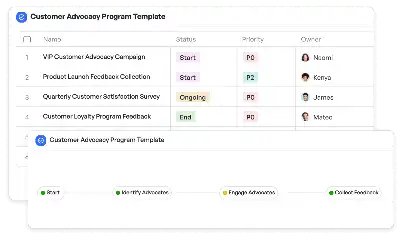Hardware Validation Checkpoint
Achieve project success with the Hardware Validation Checkpoint today!

What is Hardware Validation Checkpoint?
Hardware Validation Checkpoint is a critical process in the hardware development lifecycle that ensures all components and systems meet predefined standards and specifications. This checkpoint is essential for identifying potential issues early in the development process, reducing the risk of costly errors during production. By implementing a Hardware Validation Checkpoint, teams can systematically test and validate hardware components such as CPUs, GPUs, motherboards, and power supplies. This process is particularly important in industries like consumer electronics, automotive, and industrial equipment, where hardware reliability and performance are paramount. For example, in the development of gaming laptops, a Hardware Validation Checkpoint ensures that the CPU and GPU can handle high-performance tasks without overheating or failing.
Try this template now
Who is this Hardware Validation Checkpoint Template for?
The Hardware Validation Checkpoint Template is designed for hardware engineers, quality assurance teams, and project managers involved in hardware development projects. It is particularly useful for teams working in industries such as consumer electronics, automotive, aerospace, and industrial manufacturing. Typical roles that benefit from this template include hardware design engineers, validation specialists, and product managers. For instance, a validation specialist working on autonomous vehicle hardware can use this template to ensure that all sensors and processing units meet safety and performance standards before integration into the vehicle.

Try this template now
Why use this Hardware Validation Checkpoint?
Using the Hardware Validation Checkpoint Template addresses several critical pain points in hardware development. One common challenge is ensuring compatibility between different hardware components, such as CPUs and motherboards. This template provides a structured approach to testing and validating compatibility, reducing the risk of integration issues. Another pain point is identifying performance bottlenecks in hardware systems. The template includes steps for performance validation, helping teams pinpoint and resolve issues before production. Additionally, the template helps teams manage the complexity of hardware testing by providing a clear framework for organizing and executing validation tasks. For example, in the development of data center hardware, this template ensures that thermal management systems are thoroughly tested to prevent overheating and ensure reliable operation.

Try this template now
Get Started with the Hardware Validation Checkpoint
Follow these simple steps to get started with Meegle templates:
1. Click 'Get this Free Template Now' to sign up for Meegle.
2. After signing up, you will be redirected to the Hardware Validation Checkpoint. Click 'Use this Template' to create a version of this template in your workspace.
3. Customize the workflow and fields of the template to suit your specific needs.
4. Start using the template and experience the full potential of Meegle!
Try this template now
Free forever for teams up to 20!
The world’s #1 visualized project management tool
Powered by the next gen visual workflow engine




